Best Java Programming Books to Buy in December 2025
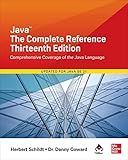
Java: The Complete Reference, Thirteenth Edition


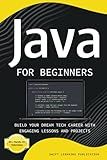
Java for Beginners: Build Your Dream Tech Career with Engaging Lessons and Projects


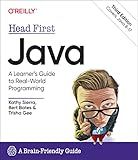
Head First Java: A Brain-Friendly Guide


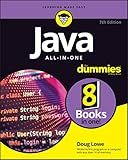
Java All-in-One For Dummies



Java Programming Language: a QuickStudy Laminated Reference Guide


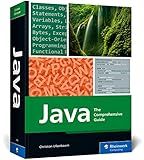
Java: The Comprehensive Guide to Java Programming for Professionals (Rheinwerk Computing)


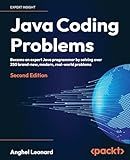
Java Coding Problems: Become an expert Java programmer by solving over 250 brand-new, modern, real-world problems


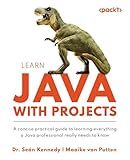
Learn Java with Projects: A concise practical guide to learning everything a Java professional really needs to know


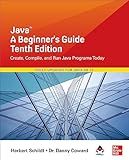
Java: A Beginner's Guide, Tenth Edition


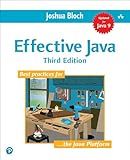
Effective Java


In Java, an ArrayList is a class provided by the Java Collections Framework that is used to store and manipulate a dynamic collection of objects. To use an ArrayList in Java, you first need to import the necessary package using the import java.util.ArrayList; statement. Then, you can create an ArrayList object by specifying the data type of the objects it will store, like ArrayList<Integer> list = new ArrayList<Integer>();.
To add elements to the ArrayList, you can use the add() method like list.add(10);. To access elements in the ArrayList, you can use the get() method like int element = list.get(0);. You can also remove elements from the ArrayList using the remove() method like list.remove(0);.
Other methods available for manipulating ArrayLists include size() to get the size of the ArrayList, clear() to remove all elements, and contains() to check if a specific element is present in the list.
Overall, ArrayLists in Java are versatile and flexible data structures that allow you to easily manage and work with collections of objects.
How to reverse an ArrayList in Java?
To reverse an ArrayList in Java, you can use the Collections class provided by the Java API. Here's an example code snippet that demonstrates how to reverse an ArrayList:
import java.util.ArrayList; import java.util.Collections;
public class ReverseArrayListExample { public static void main(String[] args) { ArrayList arrayList = new ArrayList<>();
arrayList.add("apple");
arrayList.add("banana");
arrayList.add("cherry");
arrayList.add("date");
System.out.println("Original ArrayList: " + arrayList);
// Reversing the ArrayList using Collections class
Collections.reverse(arrayList);
System.out.println("Reversed ArrayList: " + arrayList);
}
}
In this example, we first create an ArrayList of strings and add some elements to it. We then use the Collections.reverse() method to reverse the elements in the ArrayList. Finally, we print the original and reversed ArrayList to the console.
What is the difference between ArrayList and HashMap in Java?
- Data Structure:
- ArrayList is a collection class that stores elements in an ordered sequence, similar to an array. It allows for duplicate elements and maintains the insertion order of elements.
- HashMap is a map class that stores elements in key-value pairs. It does not allow duplicate keys and maintains no specific order of elements.
- Performance:
- In terms of performance, HashMap provides faster access to elements as it uses hashing to store and retrieve elements based on their keys. The time complexity for inserting, removing, and accessing elements in a HashMap is O(1) on average.
- ArrayList, on the other hand, provides faster access to elements by index but has a linear time complexity of O(n) for inserting or removing elements at arbitrary positions.
- Usage:
- ArrayList is used when you need to store a list of elements in a specific order and need to access elements by index.
- HashMap is used when you need to store data in key-value pairs and need fast access to elements using keys.
- Iterating:
- Iterating over an ArrayList is typically done using a for loop with index-based access to elements.
- Iterating over a HashMap is typically done using an iterator or enhanced for loop to access key-value pairs.
- Keys:
- HashMap requires unique keys, while ArrayList allows duplicate elements.
In conclusion, ArrayList is used to store a list of elements in a specific order, while HashMap is used to store data in key-value pairs for fast access using keys. The choice between ArrayList and HashMap depends on the specific requirements of your application.
What is the difference between ArrayList and TreeSet in Java?
- Ordering:
- ArrayList: Maintains the order of elements as they are inserted.
- TreeSet: Orders elements in a sorted manner based on their natural order or a custom comparator.
- Duplicate elements:
- ArrayList: Allows duplicate elements.
- TreeSet: Does not allow duplicate elements.
- Performance:
- ArrayList: It is fast in adding and accessing elements based on index as it uses an array to store elements. However, searching and removing elements can be slower for larger lists.
- TreeSet: It is slower in adding and accessing elements compared to ArrayList as it needs to maintain the order. However, searching, removing, and iterating elements efficiently, especially for sorted operations.
- Interface:
- ArrayList: Implements the List interface which allows random access to elements using indexes.
- TreeSet: Implements the Set interface which does not allow duplicate elements and stores elements in a sorted manner.
- Memory usage:
- ArrayList: Consumes more memory as it maintains an array to store elements.
- TreeSet: Consumes less memory as it uses a tree structure to store elements efficiently.
In conclusion, the main difference between ArrayList and TreeSet is their ordering, handling of duplicates, performance characteristics, interface implementation, and memory usage. The choice between ArrayList and TreeSet would depend on the specific requirements of the application, such as the need for ordered or sorted elements, the presence of duplicates, and the trade-off between performance and memory usage.
